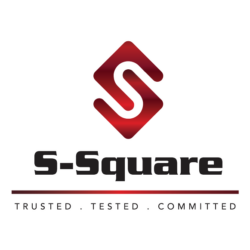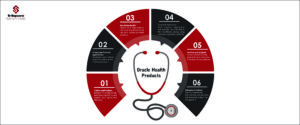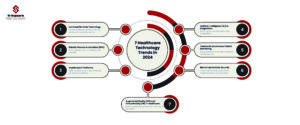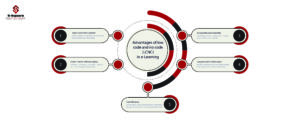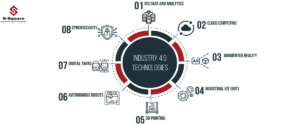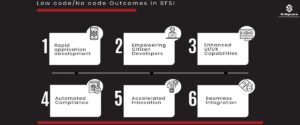
Introduction:
Amazon RDS is relational database service from AWS. It is a DBaaS (DataBase as a Service) offering from AWS. It delivers scalable and cost-efficient database services while automating time-consuming administration tasks such as hardware provisioning, database setup, patching and backups. It makes your job on databases easy so that you can focus on your applications.
Amazon RDS Database Engines:
Following six database engines are available with Amazon RDS.
-
- Amazon Aurora
- Oracle
- Microsoft SQL Server
- MariaDB
- PostgreSQL
- MySQL
Amazon Aurora:
-
- Aurora is Amazon’s own relational database and it is MySQL and PostgreSQL-compatible.
- It is up to five times faster than standard MySQL databases and three times faster than standard PostgreSQL databases.
- Provides the security, availability, and reliability of commercial databases at 1/10th the cost.
- Amazon Aurora features a distributed, fault-tolerant, self-healing storage system that auto-scales up to 64TB per database instance.
- Delivers high performance and availability with up to 15 low-latency read replicas, point-in-time recovery, backup to Amazon S3, and replication across three Availability Zones (AZs).
Oracle:
-
- Oracle Database is a relational database management system developed by Oracle.
- Oracle Database deployment in the AWS cloud is very easy with few clicks.
- Amazon RDS supports Oracle Enterprise and Standard editions and 11g, 12c and 18c versions.
- The hourly license for the “License Included” model in Amazon RDS is available only for Oracle Standard Edition One and Standard Edition Two.
- For other editions of Oracle Database on Amazon RDS and any edition of Oracle Database on Amazon EC2, you need to use your own license (bring-your-own-license (BYOL) model).
Microsoft SQL Server:
-
- SQL Server is a relational database management system developed by Microsoft.
- You can deploy multiple editions of SQL Server (2012, 2014, 2016, and 2017) including Express, Web, Standard and Enterprise, in minutes with cost-efficient and re-sizable compute capacity with Amazon RDS.
- Amazon RDS supports hourly license for the “License Included” model for Microsoft SQL Server.
MariaDB:
-
- MariaDB is developed and supported by the MariaDB open source community.
- MariaDB Community Edition is a MySQL-compatible database with support from the open source community.
- Supports database size up to 64 TiB, 5 Read Replicas per instance.
- Supports General Purpose, Memory Optimized, and Burstable Performance instance classes.
- Supports automated backup and point-in-time recovery.
- Supports global transaction ID (GTID) and thread pooling.
PostgreSQL:
-
- PostgreSQL is a powerful, open-source object-relational database system with a strong reputation of reliability, stability, and correctness.
- PostgreSQL is the most Oracle-compatible open-source database.
- Supports high reliability and stability in a variety of workloads.
- Advanced features to perform in high-volume environments.
- Vibrant open-source community that releases new features multiple times per year.
- Supports multiple extensions that add even more functionality to the database.
- Supports General Purpose, Memory Optimized, and Burstable Performance instance classes.
MySQL:
-
- MySQL is the most popular open source database in the world.
- MySQL on RDS offers the rich features of the MySQL community edition with the flexibility to easily scale compute resources or storage capacity for your database.
- Supports database size up to 64 TiB.
- Supports General Purpose, Memory Optimized, and Burstable Performance instance classes.
- Supports automated backup and point-in-time recovery.
- Supports up to 5 Read Replicas per instance, within a single Region or cross-region.
Amazon RDS Features:
-
- As with all Amazon Web Services, there are no up-front investments required, and you pay only for the resources you use.
- Amazon RDS handles routine database tasks such as provisioning, patching, backup, recovery, failure detection, and repair.
- Offers Multi-AZ deployment for high availability and Read Replicas for read-heavy database workloads.
- RDS use two types of SSD storages like General Purpose (SSD) and Provisioned IOPS (SSD).
- With General Purpose (SSD), you can get baseline of 3 IOPS and can burst up to 3,000 IOPS.
- With Provisioned IOPS (SSD), you can get up to 40,000 IOPS.
- You can scale up/down the compute and memory up to a maximum of 32 vCPUs and 244 GiB of RAM and it takes only few minutes. Storage scaling is on-the-fly with zero downtime.
- You can choose Automated backups or Snapshot backups (user-initiated) and retain up t0 35 days for recovery purposes.
- Amazon RDS will automatically replace the compute instance powering your deployment in the event of a hardware failure.
- Using SSH and AWS Key Management Service (KMS), you can encrypt your data in transit or data at rest.
- Using AWS Identity and Access Management (IAM), you can control access to databases.
- You can use Amazon Cloud Watch for monitoring and metrics and Amazon Cloud Trail for auditing.
- Using AWS Database Migration Service (AWS DMS), you can perform homogenous or heterogenous databases migration to AWS.
Easy Administration:
-
- Using the AWS Management Console, the Amazon RDS CLI, or API calls to access the capabilities of a production-ready relational database in minutes.
- Amazon RDS database instances are pre-configured with parameters and settings appropriate for the engine and class you have selected.
- DB Parameter Groups provide granular control and fine-tuning of your database.
- Amazon RDS will make sure that the relational database software powering your deployment stays up-to-date with the latest patches and you can have schedule for patching activity.
- Amazon RDS provide best practice guidance by analysing configuration and usage metrics from your database instances and you can perform recommended actions.
Conclusion:
To take the advantage of the cloud’s simplicity, performance, and cost-effectiveness, enterprises migrate their databases from on-premises to cloud. Getting a managed database service makes your job on database administration easy so that you can focus on your applications. With Amazon RDS, AWS cloud is leading the DBaaS market.
With Amazon RDS, you have an option to choose the database engine of your choice, either commercial or open-source database. With Amazon’s simple and effective migration strategies, you can achieve hassle-free migrations to cloud which includes homogenous migrations and heterogenous migrations (between different database engines). Amazon RDS stands out from their DBaaS competitors with these simplicity, performance, and cost-effectiveness capabilities.
